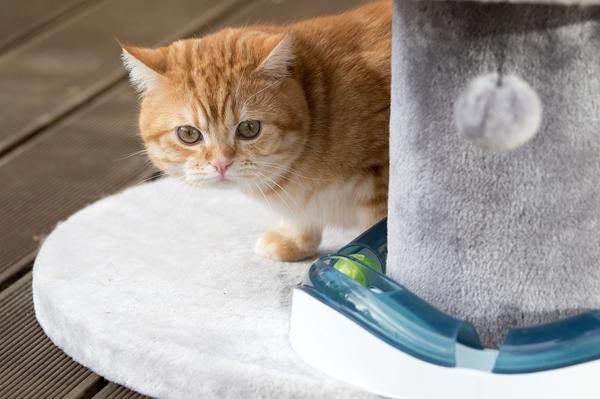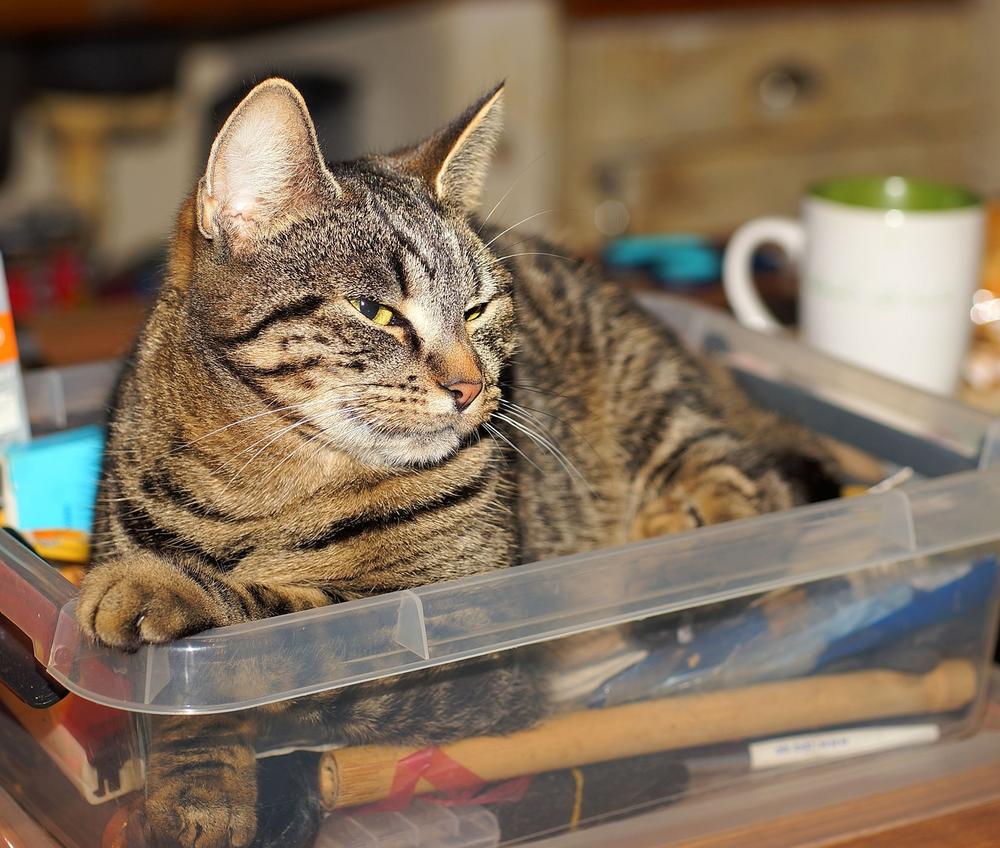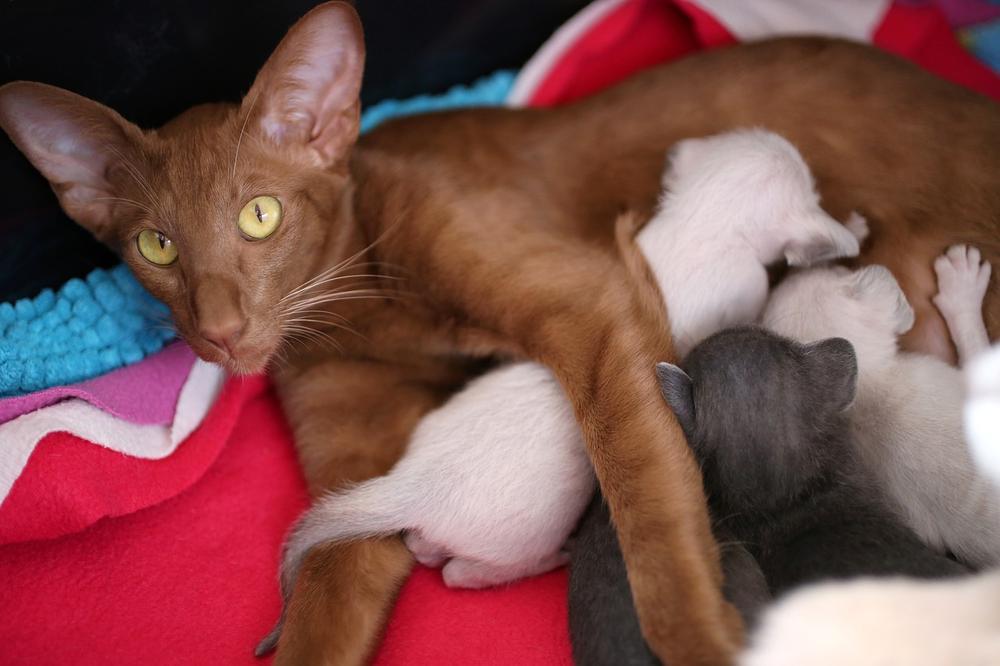Cat Sitting in Litter Box but Not Peeing: What's Wrong?

You'll agree with me when I say:
Worried sick about your cat sitting in the litter box but not peeing? 😩
Like, seriously, it's enough to drive any cat parent insane.
What if it's a serious health issue?
But hey, take a deep breath.
Let's dive into this together, shall we?
Signs of Urinary Tract Infections in Cats
Look for signs of distress or illness
When it comes to our furry little friends, we always want them to be happy and healthy. So, you should keep an eye out for any unusual behavior that might mean your cat isn't feeling well.
If you notice your cat acting more annoyed or aggressive than usual, it could be a sign that something's wrong.
Increased thirst and going to the litter box frequently are also red flags to watch for.
These could all be signs of a urinary tract infection (UTI) or another medical problem.
Pay attention to litter box habits
One clear sign of a urinary tract infection in cats is when they repeatedly go to the litter box but don't actually pee.

It's like they're trying so hard, but nothing comes out. Alternatively, if your cat pees in small amounts regularly, it could mean there's trouble brewing.
What's more, difficulty peeing or pooping, severe diarrhea, or passing only tiny amounts of urine can indicate a medical issue.
Don't ignore these symptoms – take your cat to the vet to get them checked out.
Keep an eye out for Feline Idiopathic Cystitis (FIC)
The symptoms of Feline Idiopathic Cystitis (FIC) can be similar to those of a urinary tract infection.
Cats with FIC may pee a lot, strain while doing so, and even have blood in their urine.
So if you notice any of these signs, it's worth considering getting medical help for your feline friend.
Urinary tract infections are more common in older cats, but regardless of your cat's age, if you see any of the symptoms I mentioned, it's better to be safe than sorry and talk to a vet.
Main points I'll expand upon further down this article:
- Pay attention to your cat's litter box habits and cleanliness.
- Cats are picky about their litter boxes, so ensure it's clean, the right size, in a good location, and has the right type of litter.
- Use a stain and odor remover to eliminate any lingering smells of old urine.
- Excessive time spent in the litter box may indicate underlying medical issues requiring veterinary attention.
- Cats may spend time in the litter box for behavioral reasons such as play, exploration, or seeking comfort and protection.
- Address potential anxiety and provide alternative hiding spots to reduce excessive time in the litter box.
- Cats may use the litter box out of curiosity or dissatisfaction with its setup.
- Stress at home can lead to marking territory outside the litter box.
- Common medical reasons for spending time in the litter box include kidney disease, diabetes, urinary tract infections, constipation, and arthritis.
- Responsible cat ownership, low-stress environment, routine care, and multiple litter boxes are recommended to address litter box issues.
Tips for Encouraging a Cat to Pee in the Litter Box
Here's how you can ensure your cat pees in the litter box:
- Clean that litter box, pronto! Cats are real sticklers for cleanliness, so make sure you scoop out their business every day and change the entire litter once a week.
- Pick the right litter. Cats have got their preferences too, you know. Some like the clumping stuff, while others prefer non-clumping. Experiment a bit to see what floats your cat's boat.
- Don't be cheap with the boxes. If you've got multiple cats or a huge crib, it's best to have more than one litter box around. This way, you avoid any competition and make sure each kitty has easy access.
- Say no to covered boxes. Lots of cats ain't fans of boxes with lids because they trap odors. Keep it simple with an open box instead.
- When all else fails, bring in reinforcements. Sometimes, cats just don't wanna use the litter box 'cause they got issues, man. Adding another box in a different spot might do the trick.
- Help your cat chill out. Stress and anxiety can really mess up a feline's bathroom routine. So, if you notice any big changes or a new pet causing your kitty some distress, try to address it, you dig?
Cats love routine.
Stick to these tips and you'll have a purrfectly litter-trained cat.

In addition to these helpful tips, I wanted to let you know that I've written a comprehensive guide to address another common concern among cat owners.
If you're worried about your pregnant cat not eating or eating less, I highly recommend checking out my blog post Why Is My Pregnant Cat Not Eating.
It delves into the possible reasons behind this behavior and offers valuable insights for anxious cat parents like you.
How Long is Too Long for a Cat to Stay in the Litterbox?
If your cat spends more than 10-15 minutes in the litter box without urinating, that might indicate a problem.
Cats are not supposed to spend excessive time in there, so it suggests something is wrong and you should take them to the vet.
This behavior could be a sign of urinary or gastrointestinal issues that require medical attention.
Don't ignore it, as it's not normal for cats and demands further investigation.
Remember, your furry friend relies on you to keep them healthy and happy.
Take action and get them the help they need.
Possible Medical and Behavioral Causes for Cat Litterbox Behavior
If you've noticed your cat spending excessive time in the litter box, you should understand the possible reasons behind this behavior.
While stressful events like moving or introducing a new pet can trigger such behavior, there are also various behavioral factors at play.
Here are some potential medical and behavioral causes for cat litter box behavior:
- Cats may use the litter box for play or exploration, as they see it as a fun spot.
- It may surprise you, but cats occasionally use the litter box as a sleeping spot, finding comfort and warmth there.
- Feeling stressed or anxious due to changes in their environment can lead cats to hide in the litter box as a form of self-soothing.
- Extended periods of sitting without urinating might indicate anxiety, prompting cats to seek alone time or find solace in the litter box.
- Medical issues like kidney disease, diabetes, urinary tract infections, constipation, and arthritis could also be causing your cat's litter box behavior.
To effectively address these issues, ensure your cat has alternative hiding spots and address any potential sources of anxiety.
In addition, consult a veterinarian to determine if it's a medical issue or related to behavior.
Maintaining a low-stress environment, routine care, and having multiple litter boxes in multi-cat households can help prevent territorial conflicts and sharing problems.
And that wraps up today's article.
If you wish to read more of my useful articles, I recommend you check out some of these: Black Cat Turning Brown, Cats Purring Sound Congested, Why Is My Cats Nose Bleeding, Older Cat Shedding Excessively, and Why Does My Cat Have a Dry Nose
Talk soon,
-Sarah Davis